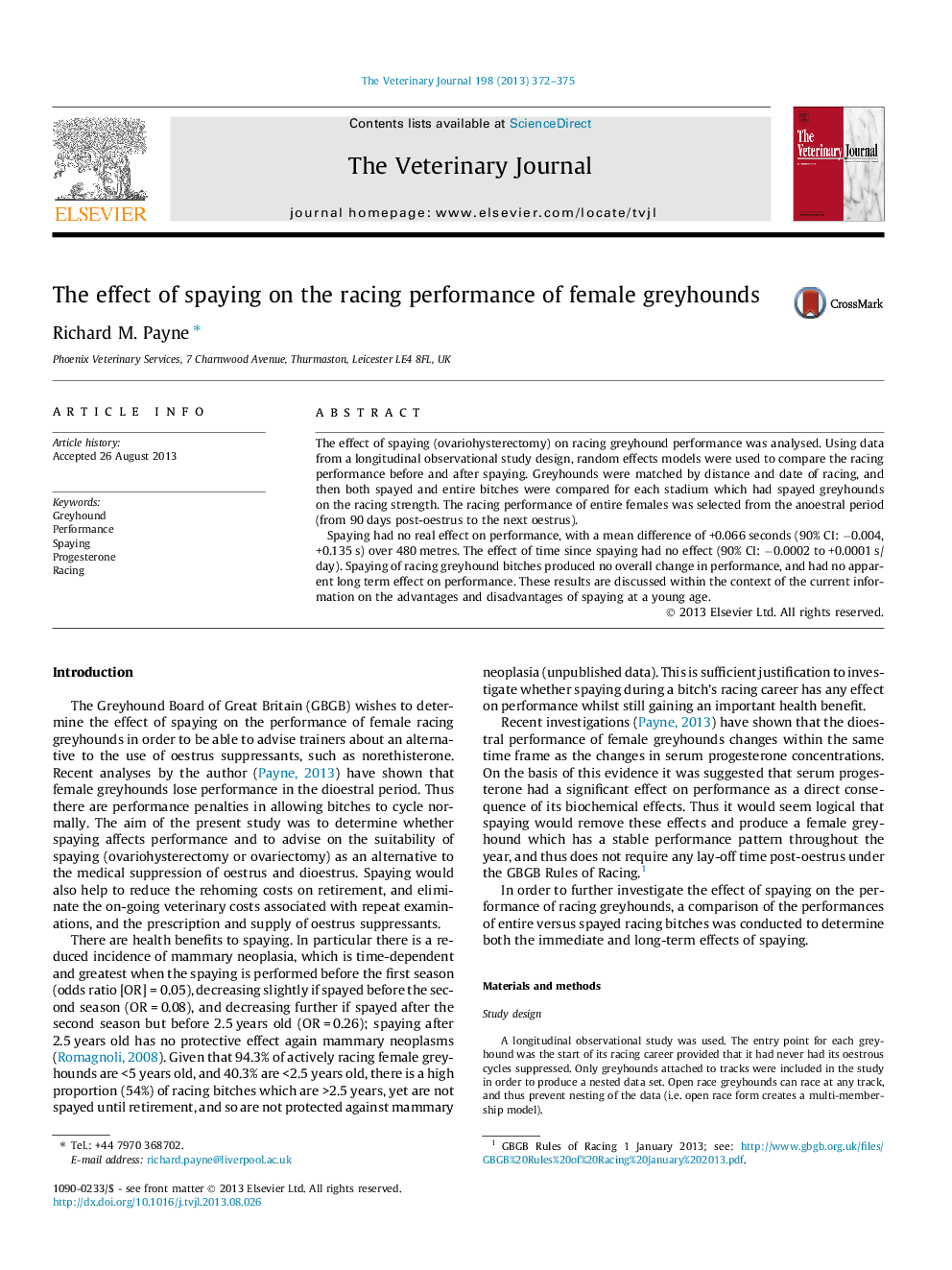| Article ID | Journal | Published Year | Pages | File Type |
|---|---|---|---|---|
| 2464113 | The Veterinary Journal | 2013 | 4 Pages |
The effect of spaying (ovariohysterectomy) on racing greyhound performance was analysed. Using data from a longitudinal observational study design, random effects models were used to compare the racing performance before and after spaying. Greyhounds were matched by distance and date of racing, and then both spayed and entire bitches were compared for each stadium which had spayed greyhounds on the racing strength. The racing performance of entire females was selected from the anoestral period (from 90 days post-oestrus to the next oestrus).Spaying had no real effect on performance, with a mean difference of +0.066 seconds (90% CI: −0.004, +0.135 s) over 480 metres. The effect of time since spaying had no effect (90% CI: −0.0002 to +0.0001 s/day). Spaying of racing greyhound bitches produced no overall change in performance, and had no apparent long term effect on performance. These results are discussed within the context of the current information on the advantages and disadvantages of spaying at a young age.
